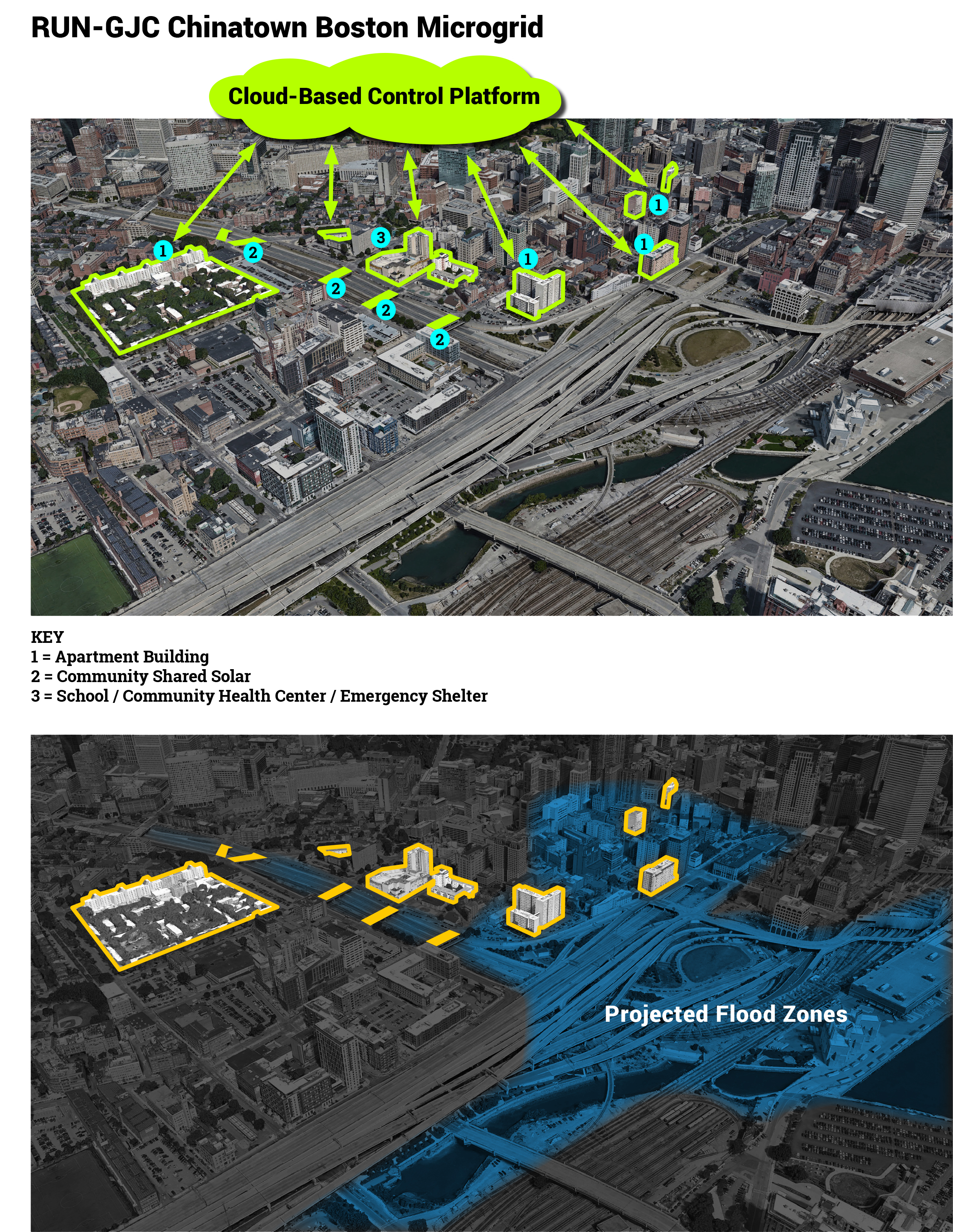
Affordability. Community control. Sustainability. Democracy. Progressive-minded people apply these and other values regularly to major areas of our personal and community lives - from our housing to food systems to public education. But when it comes to energy supply, which we rely on for so many essential needs, there is little control we can exercise over it - the vast majority of us interact with the energy grid only when we flip switches or receive utility bills. Clean Water is working with our partners in the Green Justice Coalition (GJC) and a new technical team called Resilient Urban Neighborhoods (RUN) to explore and build out alternatives.
Our current energy ‘macrogrid’ is the end product of a vast system dominated overwhelmingly by giant corporations and dirty fuels: first fossil or nuclear fuels are extracted from mines or wells, then sent to refineries (often via massive pipelines), then to huge generation plants that produce electricity - which moves to population centers via high-voltage transmission lines, and finally to each customer through local distribution poles and wires. This setup is fundamental to the way we live, study, work and play - enabling us to do everything from homework to running medical equipment to preserving perishable food. In a hurricane or other natural disaster, the number of casualties is multiplied, sometimes exponentially, by lack of access to electricity or heat when the power ‘goes down’.
Local energy networks called ‘microgrids’ have been around for a long time. They consist of a closed loop of generators and wiring between a set of buildings that can separate from the main macrogrid. They are almost always on a campus owned by one utility customer - like a military or medical facility - where reliable power is critical. This allows the buildings wired together to stay up and running if power from the macrogrid ever is lost due to a failure. What Clean Water noticed however, is that over and over again, those most at risk from natural disasters tend to be poor people, and most often in communities of color. Hurricane Katrina in 2005 provided a clear example of this disparity, where the government failed to provide for a looming crisis, and people without the means to evacuate ended up suffering terribly in the storm and in its aftermath. The same happened in Puerto Rico during and after the double whammy of Hurricanes Irma and Maria in 2017, knocking out power across the island, in many cases for a record-setting 8+ months.
These kinds of environmental injustices will inevitably increase in frequency and severity as climate disruption intensifies in coming years. So Clean Water and RUN-GJC are starting the process of re-imagining our energy infrastructure in ways that prioritize climate resilience for the most vulnerable communities, and empower them to make decisions democratically about the infrastructure they want. In addition, we are acutely aware that climate preparedness, while increasingly important, is not the only concern - these communities are also under threat from systemic economic inequality and racism, like gentrification and underinvestment by the government and private sector. Therefore, we are also committed to building up social resilience through our microgrid projects, enabling democratic community control over this essential resource and keeping as many of their benefits circulating through the local economy for as long as possible.
In Boston’s Chinatown and the neighboring city of Chelsea, both working-class immigrant communities facing severe pressures like toxic levels of air pollution, rampant ‘luxury’ overdevelopment and worsening climate risk. We have partnered with the Chinese Progressive Association and GreenRoots respectively. These GJC member groups anchor our first two microgrid projects, and help with the critical task of informing, consulting and mobilizing their communities behind climate resilience. They provide the trust needed to engage local residents, businesses and institutions, as well as language and other skills to facilitate the democratic, bottom-up process.
We also work closely with RUN partners like Clean Energy Solutions, Climable and Peregrine Consulting, to conduct thorough technical and financial analyses of these projects. We aim to find a non-exploitative financing stream that allows for maximum return to communities and workers, and are exploring relationships with organized labor as a potential source of responsible capital for these, and perhaps future, microgrids. We also are working to include a fleet of shared electric vehicles and resilient communications infrastructure within the project, so as to meet other critical community needs.
All in all, despite the complexities of energy regulation, technology, marketing and financing, Clean Water and RUN-GJC are optimistic we’ll have fully functional community-controlled clean energy microgrids up and running within the next couple of years. Stay tuned!


